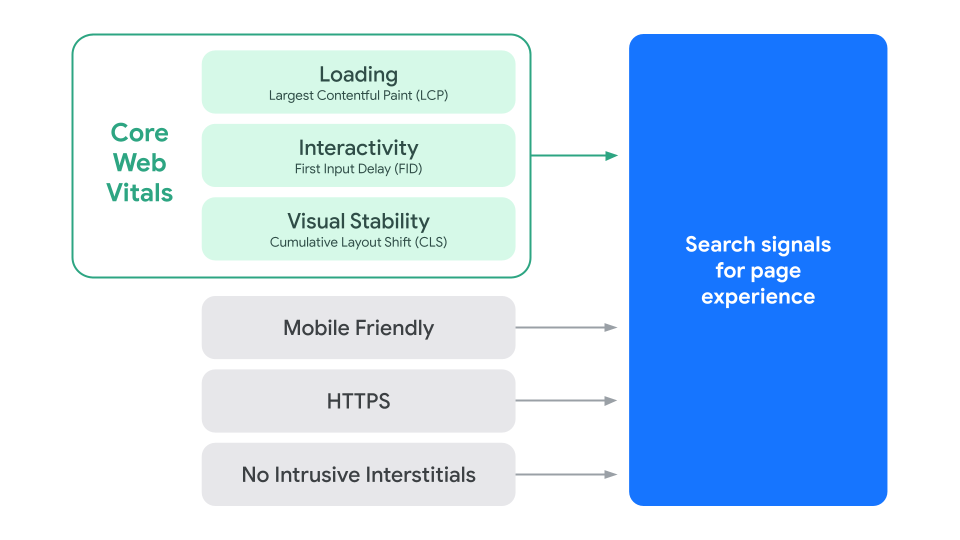It shouldn’t come as a surprise that here at iloveseo.com, we talk a lot about SEO (short for search engine optimization, FYI). But one thing we haven’t spent a lot of time doing is answering one of the most important SEO questions of all: How does SEO work, anyway??
Now, we’re changing that. Let’s take a look at the functionality of SEO and explore how you can make it work for you.
How Search Engines Work
SEO simply wouldn’t exist without search engines. So when explaining how SEO works, it’s crucial to also unpack the search engines it’s based on.
To do so, we’ll have to rewind time back to the 1990s. Back then, search engines were rudimentary compared to those we’re used to today. They based their rankings almost exclusively on keywords alone, and while that initially didn’t seem like a bad idea, it soon culminated in less-than-awesome results and an even worse user experience.
For instance, let’s say you’re a passionate gardener circa 1993. You create a webpage explaining how to plant and grow roses, and it begins to show up at the top of the search engine results pages (SERPs).
But there’s another website that wants to rank higher than you for the keyword “roses,” so instead of writing an even more informative and helpful page on the topic, they publish one with content that looks something like this:
red roses pink roses plant roses prune roses grow roses rose gardening rose nursery english roses turkish roses china roses french roses tea roses types of roses species of roses
For obvious reasons, that tactic is called keyword stuffing. And although you and every other human can tell such a page offers no value to readers, the search engines at the time weren’t as smart. So, that spammy, keyword-stuffed page would rise to the top of the SERPs, while your genuinely helpful page would sink to obscurity.
Computer scientists knew there had to be a better way, but Stanford students Larry Page and Sergey Brin were the first to create one and put it in a polished, scalable package. It was called Google, and they introduced it in a 1996 paper titled “The Anatomy of a Large-Scale Hypertextual Web Search Engine.”
There, they described how their unique search engine algorithm would evaluate pieces of content based not only on keywords, but also on external backlinks and anchor text.
In that way, the algorithm could use signals from human users to determine how relevant and trustworthy a page was.
Today, Google’s algorithms work in much the same way—they’ve just gotten more advanced. Since rolling out the page experience update, for example, Google has started to rank pages based on a slew of other user-focused metrics.
These include the three Core Web Vitals:
A page’s mobile-friendliness, Hypertext Transfer Protocol Secure (HTTPS) and lack of intrusive interstitials are considered as well:
All modern search engines work in a similar fashion, although non-Google engines are admittedly usually not quite as advanced. And don’t get us wrong, they still take keywords into consideration — but crucially, keywords are just one search engine ranking factor among many, not the be-all and end-all.
How SEO Works
Knowing how organic search and search engines themselves work, it’s much easier to understand the core components of SEO.
Keep in mind that the “O” in “SEO” stands for “optimization.” And how does one optimize a web page (or even an entire website) for search engines specifically? It all comes down to a few key areas:
- Ranking factors such as Core Web Vitals, keyword use and mobile-friendliness.
- Quality content that keeps human users engaged and interested.
- Backlinks from trustworthy sites.
- Crawlability, i.e. the ease with which search engine bots can crawl any given page, whether it’s a blog post or contact form.
It’s only by addressing all of those categories that SEO practitioners can drive the results they’re looking for. Let’s take a closer look at each one.
Ranking Factors
Google doesn’t publish an exhaustive list of its ranking factors for organic search (and neither does any other major search engine we know of), but it has confirmed the existence of several. These include:
- relevant keywords;
- anchor text;
- relevance to the given search query;
- page speed;
- backlinks (i.e. inbound links);
- mobile-friendliness;
- HTTPS; and
- content freshness.
Other metrics such as bounce rate aren’t ranking factors on their own, but they can be indicators of poor page speed or a lackluster user experience.
Needless to say, people who want their site to achieve higher search rankings would be wise to pay attention to those factors.
High-Quality Content
As we discussed earlier, it takes more than a string of search terms to fool Google into thinking online content is high-quality.
That’s because its algorithms (and human Quality Raters) take a disciplined approach to evaluating content quality. From a page’s layout, to its design, to its images, everything is taken into consideration when determining the overall quality of a piece of content, even if those individual elements aren’t official ranking factors.
To gain a deeper understanding of how Google assesses quality, just take a look at its E-A-T concept. Rather than focusing on technical details, this concept is all about giving value and a better user experience to potential customers.
Backlinks
You already know that relevant links are a ranking factor, but they make up such a major one that it’s worth exploring further.
Here’s the gist of how inbound links work in the context of search algorithms: Every time a high-quality site links to yours, that counts as a vote of confidence. The more votes your site has, the stronger its reputation.
And if a very authoritative site links to yours, that vote has even more sway. So if you get a couple quality links from a longstanding site like CNET, for example, they could be worth dozens of backlinks from less trustworthy sources.
Think you can make Google believe your site has more authoritative backlinks than it actually does? Think again: With its stringent guidelines on link schemes and similar tactics, your chances of getting away with it are slim to none.
If you really want to improve your rankings, it’s wiser to stick to tried and true link building methods.
Crawlability
It makes sense that if Google is having trouble accessing and reading a site’s content, it won’t assign it with a higher SERP ranking. That’s why crawlability is so crucial to every site’s success.
However, crawlability can be easy to overlook because it requires thinking like a bot to fully understand. Specifically, you’ll have to think like the search engine crawler Googlebot. As Google puts it, Googlebot is “the general name for two different types of crawlers: a desktop crawler that simulates a user on desktop, and a mobile crawler that simulates a user on a mobile device.”
Whether Googlebot is crawling your site in a mobile or desktop environment, though, it will essentially do the same thing: Visit various pages on the site by following internal links, and gathering content as it goes.
After your site’s content is gathered, it’s then indexed in Google’s database so it can be efficiently retrieved to provide users with relevant search results.
But if Googlebot isn’t able to crawl your site, it won’t gather any content, that content won’t get indexed, and your site won’t show up in nearly as many search results. The solution? Ensure crawlability by creating an organized sitemap, improving internal link structure, cleaning up your site’s code (or even minifying it), mending broken links, increasing page speed and focusing on mobile-friendliness.
Off-Page SEO vs. On-Page SEO
To truly understand how SEO works, you should also be able to distinguish the two main types of SEO: off-page and on-page SEO.
Put simply, on-page SEO refers to SEO elements and tactics that take place directly on your site. For instance:
- writing optimized title tags;
- creating a high-quality content strategy;
- using structured data;
- frequently publishing fresh blog content;
- improving your site’s speed;
- streamlining your site’s code;
- including strategic external links; and
- addressing user intent, also known as search intent.
On the other hand, off-page SEO refers to all the SEO techniques that take place outside your site. These can involve:
- guest posting on other sites;
- publishing content on social media sites;
- content marketing;
- creating a Google Business Profile (formerly known as Google My Business);
- purchasing Google Ads, or any other paid search ads; and
- influencer marketing.
Both on-page and off-page SEO are part of a successful SEO strategy. So whether you’re crafting a guest post to be published on another site or using your favorite keyword tool to optimize one of your own site’s pages, you’ll still be working to boost your rankings and increase your brand’s online visibility.
Want to Master SEO? Learn How It Works
Just as with any other craft, you can get started with SEO without fully grasping the driving forces behind it. After all, any SEO beginner can sprinkle strategically chosen keywords throughout their site without knowing the ins and outs of Google’s latest algorithm update.
But if you want to push your SEO strategy to the next level, it’s worth taking the time to learn exactly how SEO works, and why some methods are effective while others aren’t. You won’t just be boosting your knowledge and attracting more potential customers by doing so — in the end, your rankings will surely benefit too.
Image credits
Google Search Central Blog / November 2020










